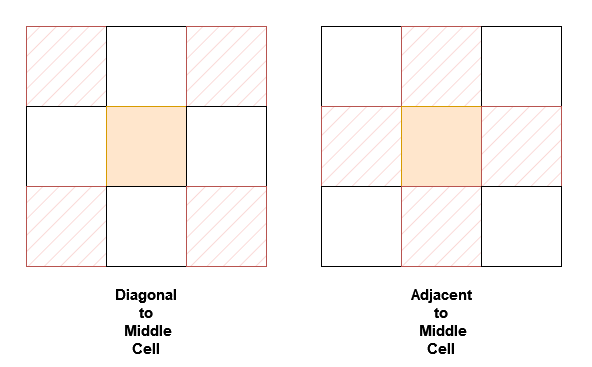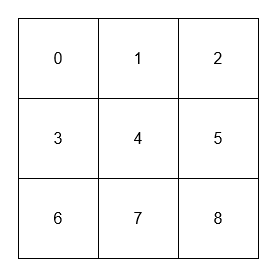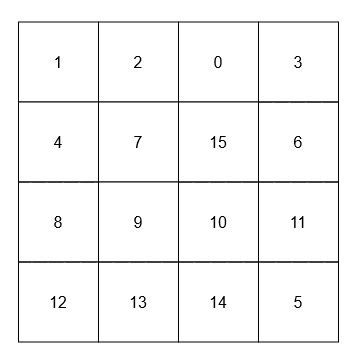LeetCode-in-Java
3242. Design Neighbor Sum Service
Easy
You are given a n x n 2D array grid containing distinct elements in the range [0, n2 - 1].
Implement the neighborSum class:
neighborSum(int [][]grid)initializes the object.int adjacentSum(int value)returns the sum of elements which are adjacent neighbors ofvalue, that is either to the top, left, right, or bottom ofvalueingrid.int diagonalSum(int value)returns the sum of elements which are diagonal neighbors ofvalue, that is either to the top-left, top-right, bottom-left, or bottom-right ofvalueingrid.

Example 1:
Input:
[“neighborSum”, “adjacentSum”, “adjacentSum”, “diagonalSum”, “diagonalSum”]
[[[[0, 1, 2], [3, 4, 5], [6, 7, 8]]], [1], [4], [4], [8]]
Output: [null, 6, 16, 16, 4]
Explanation:

- The adjacent neighbors of 1 are 0, 2, and 4.
- The adjacent neighbors of 4 are 1, 3, 5, and 7.
- The diagonal neighbors of 4 are 0, 2, 6, and 8.
- The diagonal neighbor of 8 is 4.
Example 2:
Input:
[“neighborSum”, “adjacentSum”, “diagonalSum”]
[[[[1, 2, 0, 3], [4, 7, 15, 6], [8, 9, 10, 11], [12, 13, 14, 5]]], [15], [9]]
Output: [null, 23, 45]
Explanation:

- The adjacent neighbors of 15 are 0, 10, 7, and 6.
- The diagonal neighbors of 9 are 4, 12, 14, and 15.
Constraints:
3 <= n == grid.length == grid[0].length <= 100 <= grid[i][j] <= n2 - 1- All
grid[i][j]are distinct. valueinadjacentSumanddiagonalSumwill be in the range[0, n2 - 1].- At most
2 * n2calls will be made toadjacentSumanddiagonalSum.
Solution
public class NeighborSum {
private final int[][] grid;
private final int n;
private final int[] rowIndex;
private final int[] colIndex;
public NeighborSum(int[][] grid) {
this.grid = grid;
this.n = grid.length;
this.rowIndex = new int[n * n];
this.colIndex = new int[n * n];
// Precompute the positions of each value in the grid for quick access
for (int i = 0; i < n; i++) {
for (int j = 0; j < n; j++) {
rowIndex[grid[i][j]] = i;
colIndex[grid[i][j]] = j;
}
}
}
public int adjacentSum(int value) {
int sum = 0;
int i = rowIndex[value];
int j = colIndex[value];
// Check up
if (i > 0) {
sum += grid[i - 1][j];
}
// Check down
if (i < n - 1) {
sum += grid[i + 1][j];
}
// Check left
if (j > 0) {
sum += grid[i][j - 1];
}
// Check right
if (j < n - 1) {
sum += grid[i][j + 1];
}
return sum;
}
public int diagonalSum(int value) {
int sum = 0;
int i = rowIndex[value];
int j = colIndex[value];
// Check top-left
if (i > 0 && j > 0) {
sum += grid[i - 1][j - 1];
}
// Check top-right
if (i > 0 && j < n - 1) {
sum += grid[i - 1][j + 1];
}
// Check bottom-left
if (i < n - 1 && j > 0) {
sum += grid[i + 1][j - 1];
}
// Check bottom-right
if (i < n - 1 && j < n - 1) {
sum += grid[i + 1][j + 1];
}
return sum;
}
}
/*
* Your neighborSum object will be instantiated and called as such:
* neighborSum obj = new neighborSum(grid);
* int param_1 = obj.adjacentSum(value);
* int param_2 = obj.diagonalSum(value);
*/

